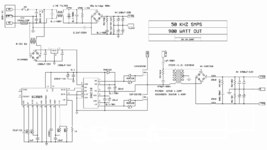Salvador12
Full Member level 4
I wanted to add a better quality capacitor to my working half bridge SMPS but I was wondering given frequency of switching stays the same and is controlled by the IGBT/mosfet driver IC.
What would change if I changed the capacitance value of the half bridge transformer capacitor ? Say i increased it from the existing 1uF to say 2.2uF.
Would that cause a larger current on each half cycle as the cap gets charged and discharged through the switches?
I attached the schematic.
What would change if I changed the capacitance value of the half bridge transformer capacitor ? Say i increased it from the existing 1uF to say 2.2uF.
Would that cause a larger current on each half cycle as the cap gets charged and discharged through the switches?
I attached the schematic.
